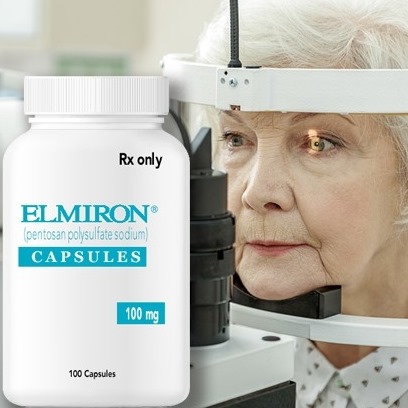Elmiron Lawsuit and Settlement Amounts

What is Elmiron and what is it used for?
Elmiron is a brand of pentosan polysulfate sodium a medicine used to treat adults with bladder pain syndrome (Interstitial cystitis), a condition of the bladder which causes pain in the pelvic area and a frequent, urgent need to pass urine.
Bladder pain syndrome can be caused by an inflamed or irritated bladder wall or ulcer in the bladder, while at other times the bladder may look normal. The condition affects between 3 million and 8 million women and between 1 million and 4 million men in the United States.
Elmiron is used in patients with moderate to severe pain and who have small bleeds or lesions (sores) in the bladder wall. The United States Food and Drug Administration approved the drug on September 26, 1996, while the European Commission granted a marketing authorization valid throughout the European Union for Elmiron on 2 June 2017.
How does Elmiron work?
The way the active substance in Elmiron, pentosan polysulfate sodium, works is not fully understood but it passes into the urine and is thought to attach to and help repair the protective layer of mucus lining the bladder, which is deficient in patients with bladder pain syndrome. This reinforcement of the protective layer may reduce inflammation and bladder pain.
How is Elmiron used?
Elmiron is available as 100-mg capsules and can only be obtained with a prescription. The recommended dose is one capsule taken three times a day. Patients should be assessed every six months and treatment should be stopped if no improvement is seen.

Safety Issues
Elmiron was widely prescribed for a bladder condition for decades, however, studies are now linking the drug to retina toxicity. After an initial report that Elmiron may be associated with retinal damage, three ophthalmologists conducted a review of patients at Kaiser Permanente in Northern California. They found that about one-quarter of patients with significant exposure to Elmiron showed definite signs of eye damage and that this medication toxicity could masquerade as other known retinal conditions, such as age-related macular degeneration or pattern dystrophy. They discovered that the rate of toxicity rose with the amount of drug consumed, from 11 percent of those taking 500 to 1,000 grams to 42 percent of those taking 1,500 grams or more. The research was presented at the 123rd Annual Meeting of the American Academy of Ophthalmology.
Elmiron lawsuits
Elmiron is the only FDA-approved pill to treat bladder pain syndrome. As a mainstay of treatment for decades, hundreds of thousands of people have been exposed to the drug. As a result, several Elmiron lawsuits have been filed against Janssen Pharmaceuticals and Bayer the makers of Elmiron.
The lawsuits alleged that manufacturers purposely held back information on the dangers of long-term use of Elmiron and the development of pigmentary maculopathy, which can result in severe vision loss and even blindness.
How long does it take for Elmiron to cause eye damage?
Studies have shown that the median duration of Elmiron use among patients that reported eye damage was about 14.5 years. But Elmiron induced eye damage symptoms could occur as early as three years after starting Elmiron treatment.
What happens when you stop taking Elmiron?
Unfortunately, most patients who stopped taking Elmiron reported that vision problems and eye damage continued to worsen. Available studies indicate that damage can continue to evolve for at least10 years after you stop taking Elmiron, and may remain a long-term threat to central vision.
Does Elmiron cause liver damage?
Although some studies have reported Elmiron-induced liver injury, Elmiron-induced hepatotoxicity has been rarely reported. If you have any liver-related condition, it is best to avoid the medication and let your doctor or health care providers know if they are considering prescribing the medication for you or your loved one.
What are the other possible side effects of Elmiron?
Get emergency medical help if you have signs of an allergic reaction: hives; difficulty breathing; swelling of your face, lips, tongue, or throat.
Call your doctor at once if you have:
• nosebleeds, bleeding gums;
• blood in your urine or stools;
• rectal bleeding;
• coughing up blood;
• a light-headed feeling like you might pass out; or
• vision problems (blurred vision, trouble reading, trouble seeing in low light).
Common side effects may include:
• bruising, blood in your stools;
• hair loss;
• nausea, diarrhea, upset stomach;
• headache;
• swelling, weight gain;
• dizziness;
• rash; or
• abnormal liver function tests.
This is not a complete list of side effects and others may occur. Call your doctor for medical advice about side effects. You may report side effects to FDA at 1-800-FDA-1088.
Did they take Elmiron off the market?
No, despite the risk of severe vision loss and even blindness, the drug remains on the U.S. market. There is no known cure for Bladder pain syndrome, symptom relief may be achieved through proper treatment. Elmiron® is still the only oral medication that is FDA approved to treat the bladder pain or discomfort associated with Interstitial cystitis (IC). There have been no recalls of Elmiron.
Patients prescribed Elmiron who suffered any form of vision loss are eligible to file lawsuits against manufacturer Janssen Pharmaceuticals. Based on average case values in other vision impairment lawsuits, lawyers estimate that Elmiron vision loss impairment cases in tier 1 may have settlement value in the range of $300,000 to $600,000. Cases in tier 2 may have a settlement range somewhere between $75,000 and $250,000.





